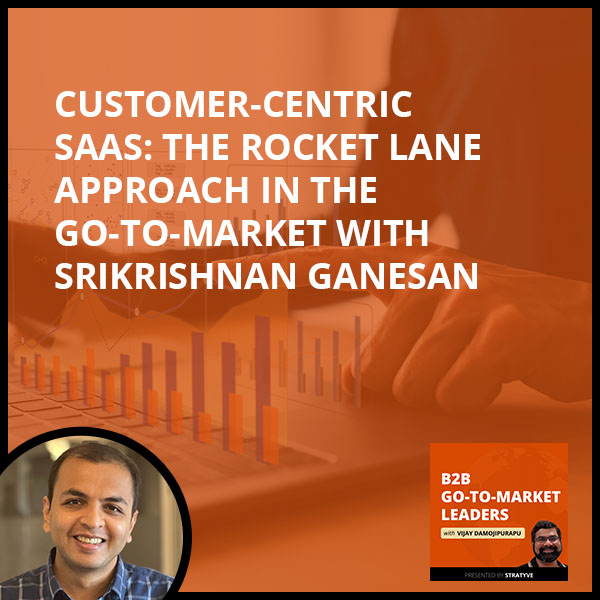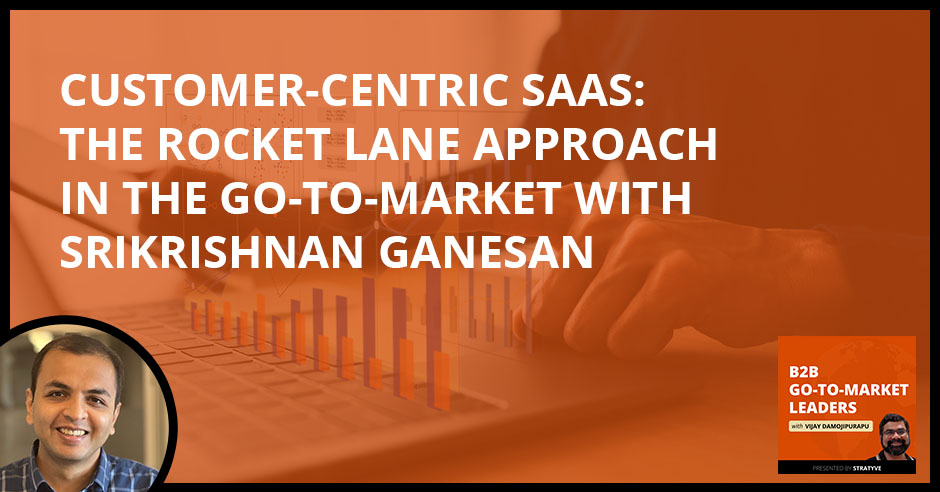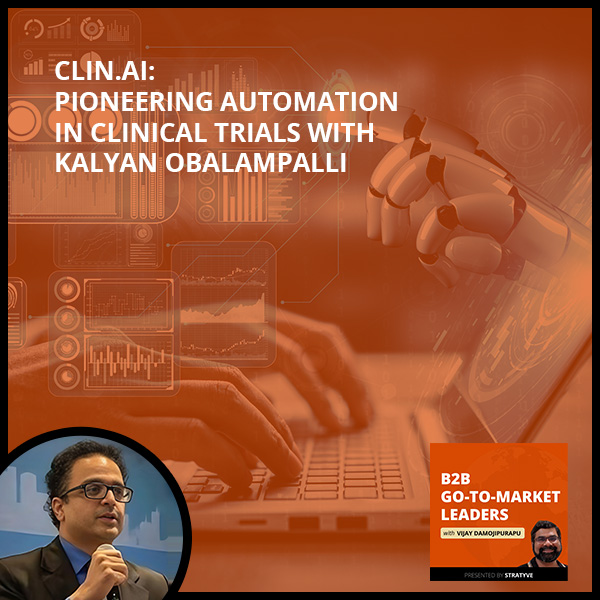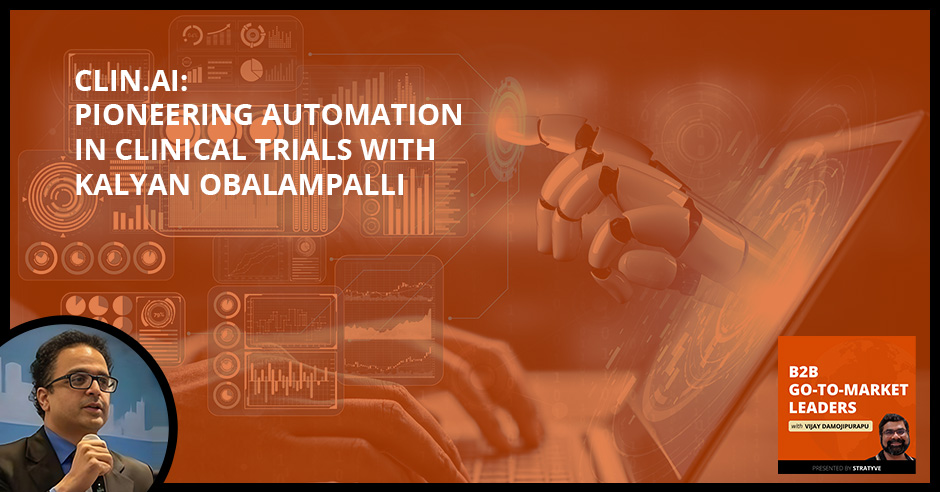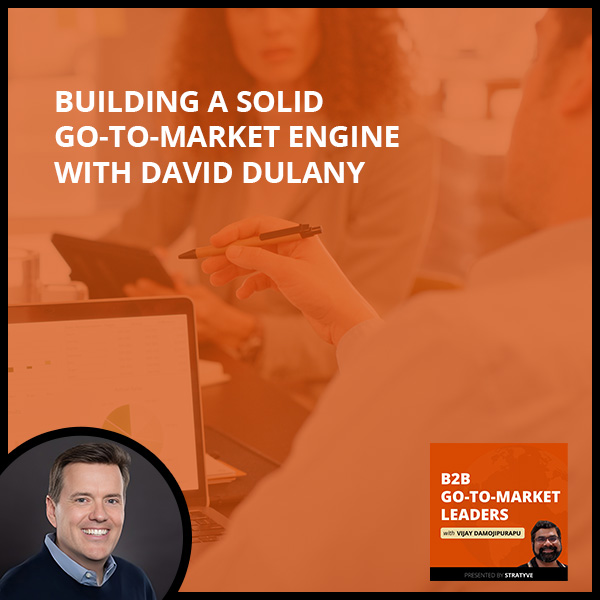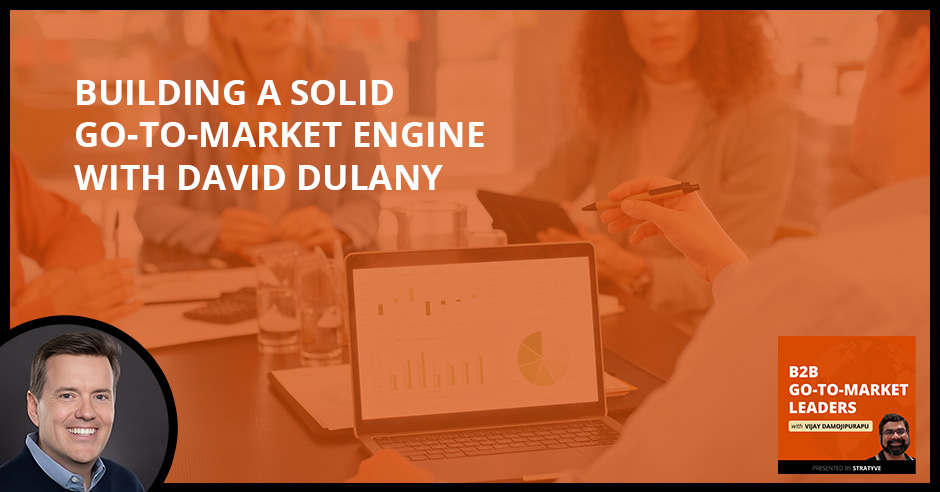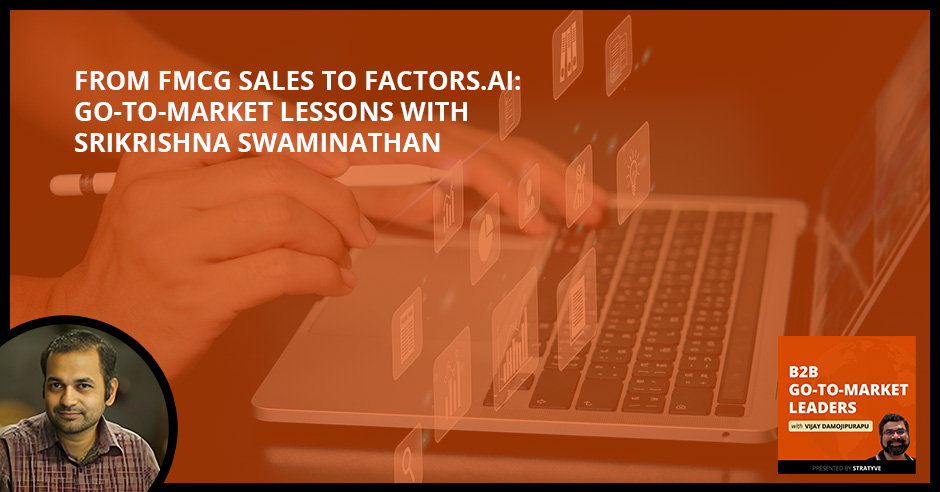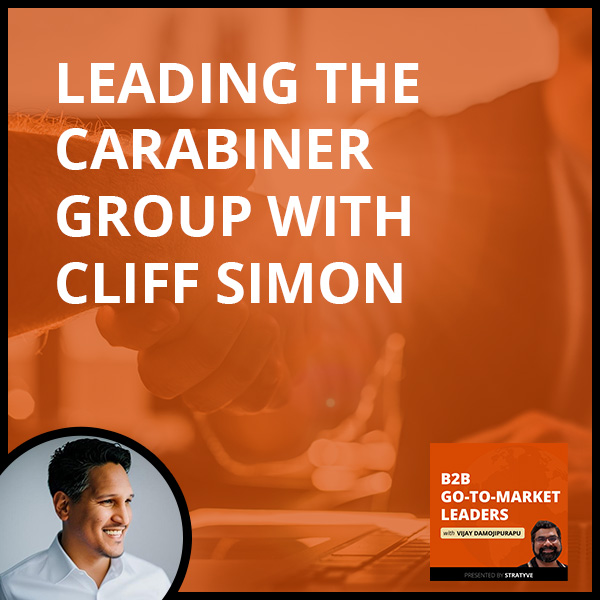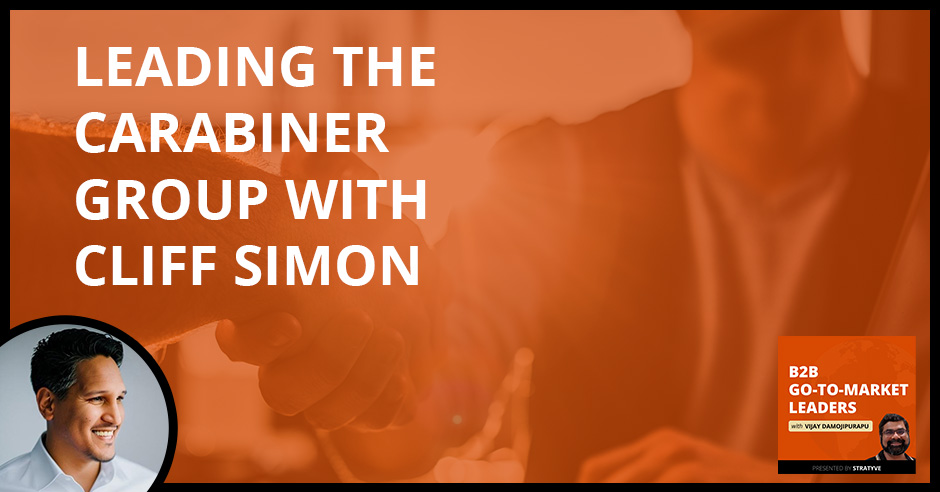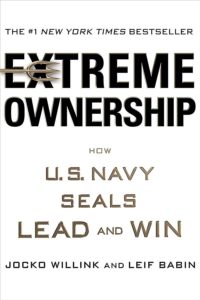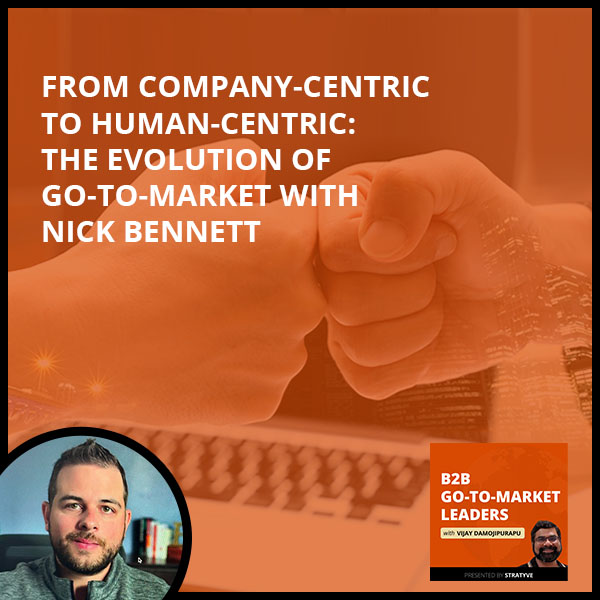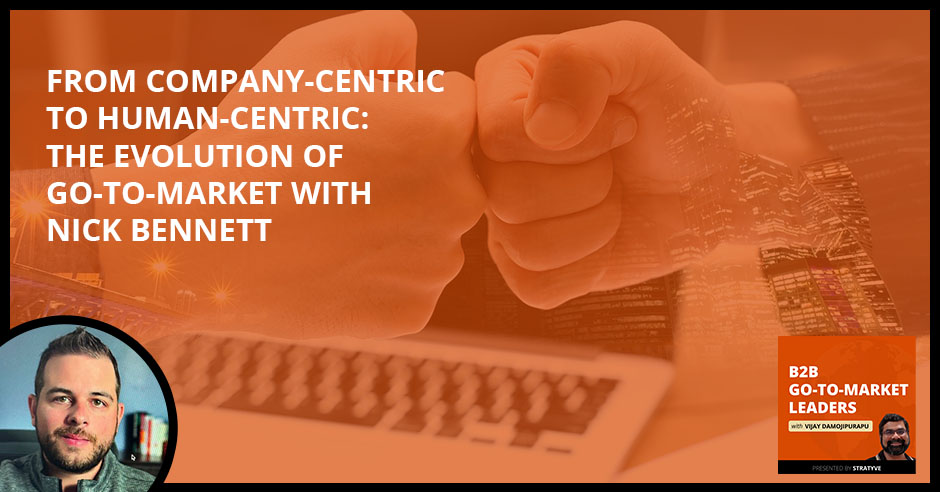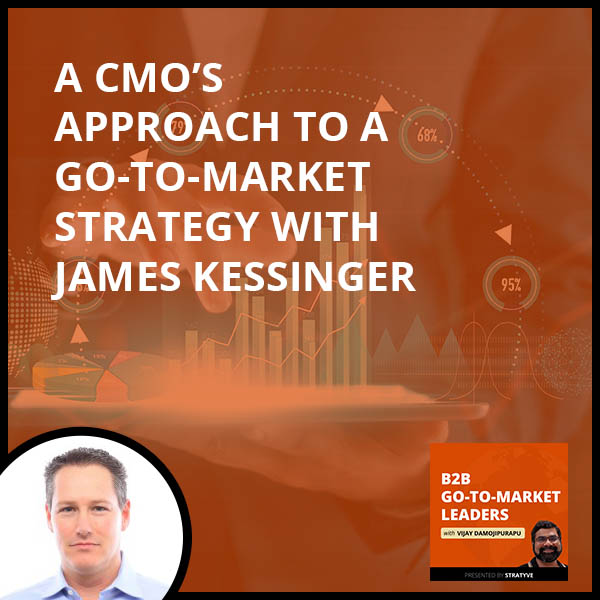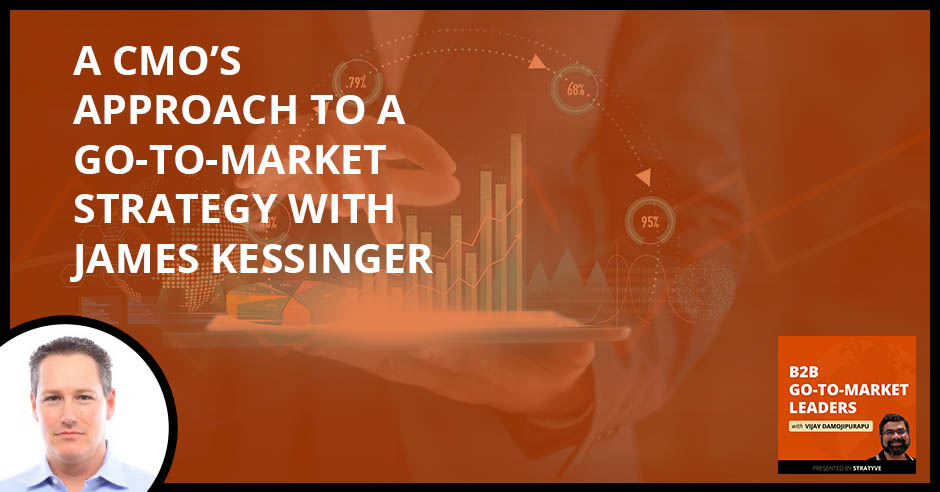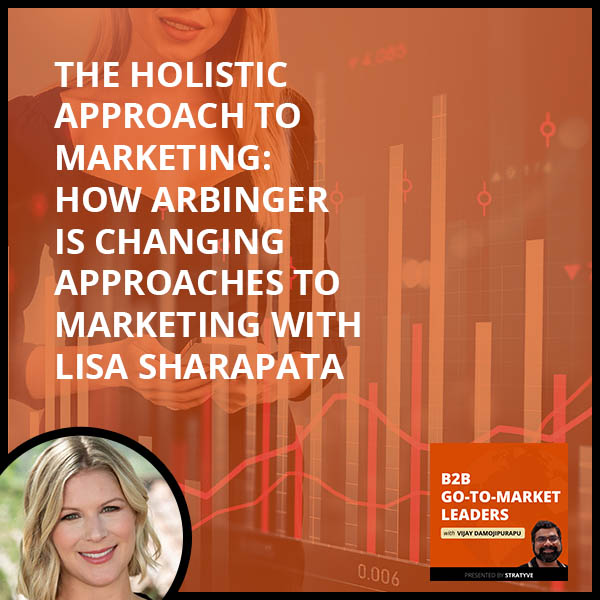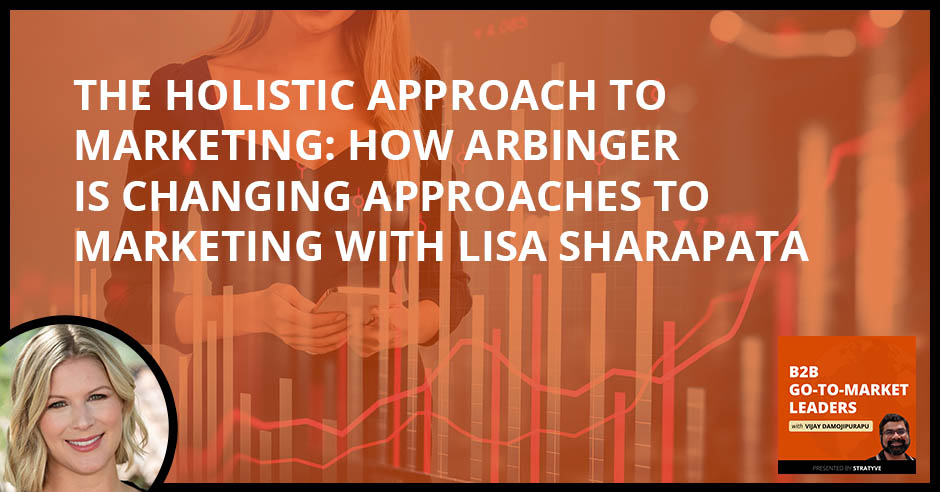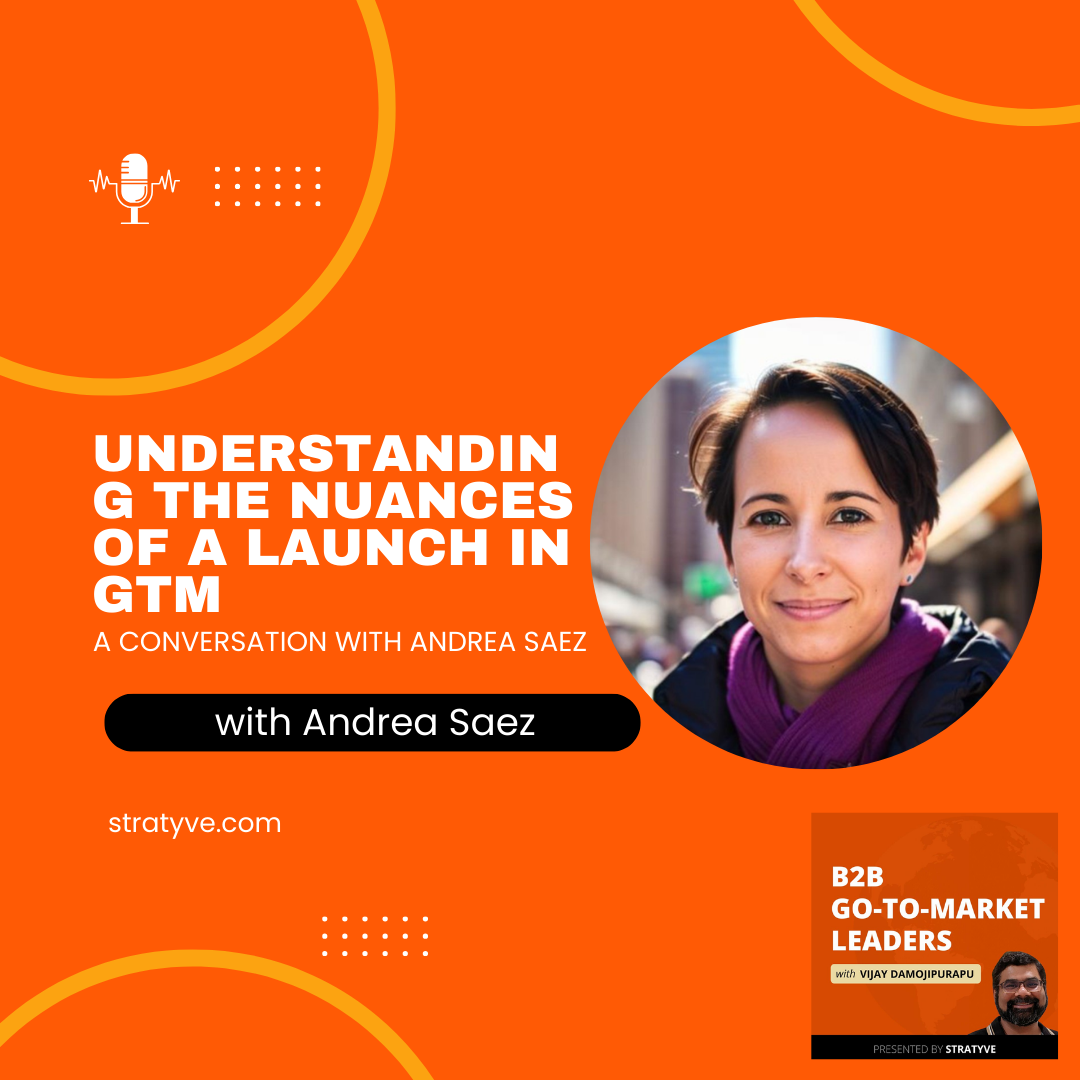
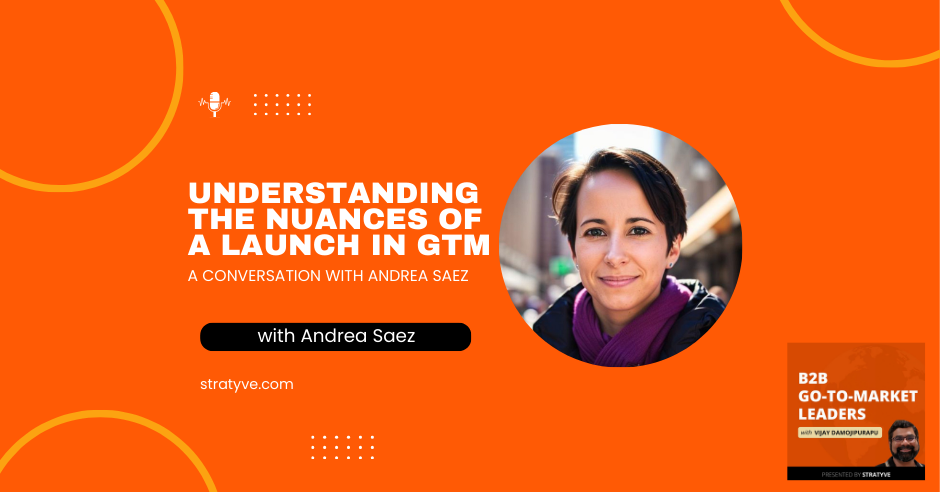
Dive into the latest episode of the B2B Go to Market Leaders podcast, where Andrea Saez’s insights provide valuable guidance for product marketers and business leaders. By embracing curiosity, viewing product-market fit as a continuous journey, and crafting a thorough framework for positioning and messaging, companies can attain strategic alignment and excel in the go-to-market strategy. Remember to focus on creating a connected narrative, addressing scalability, and building an emotional connection with your audience.
Listen to the podcast here:
Understanding the Nuances of a Launch in GTM: A Conversation with Andrea Saez
Let’s get into the signature question, which the listeners love. I mean, they love the fact that we just get right into the action part of the conversation, which is how do you view and define a good market?
Great question. I would say go to market involves the strategic steps that you’re going to take to get a feature or product from concept to ideation to launch, and involves the coordination of cross-functional teams, like product management, marketing, sales, CSS, to really have thorough alignment around positioning and differentiation. But I do want to call out one thing: a launch does not begin when the product is featured. It begins when the team decides to solve a problem. So that to me is go to market. That’s when it starts. It’s not at the end of the process. It’s not a handoff or a handover. It starts the second the product team says or asks the question, you know, should we solve this problem? And that’s when product marketing should be in the room as a strategic partner.
Yeah, I completely agree with you on all those points. takes me back to my time, my, actually my first official role as a product marketer at Microsoft. back then, my view of product marketing was, hey, we got the launch coming up, let’s build a launch checklist. And that’s where I work with the product team. I work with the sales for the sales enablement and, and just build the different pieces of content and also make sure that we got the pricing right and so on. Right. So there’s a strategic piece, the content, the tactical, and so on. Yeah. But something else has shifted my perspective, especially over the last seven, or eight years. for me personally, after taking on not just product marketing, but even growth and marketing, head of marketing roles, and speaking with a lot of the guests on the podcast as well. So the big, big shift that happened to me, Andrea, is, more often than not, especially when you’re in product organization and product marketing or product management.
I think go to market is the launch. but lunch is just the starting point. If you talk to someone in sales, someone in customer success, it’s an entirely and much deeper discussion. But to your point, I agree and love the fact that product marketing should be working very closely with the product organization when they decide to solve a problem.
Yeah, yeah. So the launch isn’t even the beginning of launches, you know, maybe a quarter of the way through. Yeah. So the beginning is, again, being a strategic partner to the product and asking those questions and being involved in the research and being involved in understanding what decisions are being made, and what decisions are not being made. Who are we building things for? How will we package this? How are we going to sell value? How are we going to explain value? and that begins, like I said, at the very beginning when the team just asked themselves, you know, can we solve this problem? Should we solve this problem?
Yeah, totally.
And that brings me to the relevant point, which is right now, by the way, for context, both for you as well as for my listeners. I have a product marketing and growth consulting practice, and I’m currently working with a chief product officer. That is a part of a company that’s in the auto industry and I and good fortune, not a lot of people get this, which is that the product management and the product team and the product organizations should pull in product marketing right from day one when they decide to engage in working on the product. Right. So not many people get that even in the product organization. And, something that I started working on, brainstorming and almost like persuading the product officer. Yes, we need to work with all those things, which is the pitch deck, the storytelling part, the value, the pricing, and the packaging, but also the personas. But even beyond that, and before that, how about we come up with a manifesto? Why should anyone care about this product? Right? What is it?
What’s the value and what’s the rather than the value is what is the perceived value? Yes.
The customer is going to see because the perceived value that we see as builders can be very different from the perceived value that they see as users. So understanding that and bringing that together is something that you need to have very, very clear from the beginning. So is the value that we’re creating the same value as they’re receiving!
And then also creating a sense of urgency to act both internally and externally. That’s a big piece as well. All right. This is a good start for sure. We covered a lot of aspects around go to market. Let’s take a step back. And why don’t you share with our listeners your career journey and, what brought you to what you’re doing today?
Well. My career journey has been very colorful. I have done everything you can possibly imagine. I have done technical support. I worked at Apple at one point, you know, like. At the Apple Store. I was going to become an engineer. And then I went into a startup, and then eventually I fell into product management.
And then eventually I found product marketing. So if there’s a lesson there is don’t be afraid to try new things. You will eventually figure out what you love, what you’re good at, and where your strengths are. and sometimes, you know, sometimes it takes time, and that’s okay. Yeah. so, now currently working as, a product marketing lead, leading the product marketing team at Unmind, which is a mental health and well-being company. and I am loving every minute of it.
Fantastic. I completely endorse and fully support your viewpoint, which is that it takes time. I mean, no career graph for any person is straight and up to the right. It never goes that way. Yeah, each of us has to find our own, and that will involve experimenting, quote-unquote, failures, which is more of feedback, and then figuring it out. Hey, you know, this company or industry or role is not for me.
Yeah, I don’t see it as a failure. I see it as growth.
Right. If it’s not for you, it’s not for you. and that’s okay. that’s That’s how you learn, right? Otherwise, this is how you end up stuck in jobs that give you no motivation and no passion, and you’re just doing it to do it. and to me, I think that’s a bit of a sad way of living your life. Yeah. You know. Oh, I do it because it pays. That’s fine. That’s also okay. and that is the reality for many people. But if you’re able to have that opportunity and that privilege to say, hey, I’m going to try something new and see how I like that, then absolutely go for it.
I would love to double-click on some of your career transition points. I’m looking at your LinkedIn and you. Yeah. As you said, you started in technical support and product support. And then at Amelia Technologies, that’s when you moved into more of a customer success and then a product manager role.
So that’s more moving from the customer-facing field into the product side of things. How was that journey or what made you move or make that move?
That’s a funny story. It happened because I asked why. Yeah. So about me, I guess it was very early in my being a customer success. I actually just asked a very simple question: Why are we doing this? What was happening was that the team had one product that was very well-established in the market. and they were then building another product, which was basically the same product, but in a different code and different language, and for a different vertical. And they had been working on it for three years. It had never been used or tested. It had never seen the light of day. for anyone that’s, you know, a coder and understands languages. it was being built in angular two and then it changed to angular three. So it had to start over and it was a whole mess. Yeah. and I just kind of ask, like, why? Why are we doing this? We already have a product that has a market that has an audience.
Can’t we just then market it to a different vertical like anyone else? And the CEO looked at me and said shit. Like, why didn’t we think of that? And he got up and just said, we’re shutting this down now. Like, stop working on it now. Okay. And at first, I was like, oh my God, what did I do? But it was one of those very obvious things that I don’t know if people were just scared to ask the question.
Were motivated to ask the question, but I was, you know, very bold. And I just said, hey, why? Right. We could just be saving money and using the product we already have, right? That’s what we did. we just shut the other product down. Focused full-time on building. Amelia. Yeah. And then we started marketing it, you know, to different verticals, and it worked.
So, so curious. I mean, what are your emotions? Are thoughts that are going because you are going to be visible when you pose that question loudly and over and over again, what moved you to actually be vocal?
It was a curiosity.
For me, it was just me. I’m a naturally very curious person, and I just wanted to understand it wasn’t a challenge. You know, a challenge, stance. It was more like, hey, I’d love to know what it is that we’re doing this. Because if I’m going to be customer support, I need to be able to answer these questions, right? Yeah. and a few weeks after that, the CEO just kind of said, okay, so you’re now going to be a product manager. And I was like, what is that?
You bring up a very good point, Andrea, which is you were in a customer support role. You were talking to and interacting with customers day in and day out. And for you, you had to know the why and that’s what pushed you to. For example, I just randomly hypothesize if you were in a more internal-like product org. I don’t know. And you’re the best person. I don’t know if you would actually push so much on the bye.
That’s a fair statement. And you’re right. And I wonder if that’s why nobody else asked the question. Because they were just focused on building. This was for context, for anyone listening. This was like. 12 years.
13 years ago, when product management wasn’t even really that popular. It was a role that I don’t think many people had back then. So there was no one in that position of, you know, being able to ask those strategic questions. I remember we had a project manager, but we didn’t have a product manager in the team, until the CEO just kind of said, okay, well, you’re making decisions now because obviously you’re asking the right questions. and that was incredibly terrifying.
And then fast forward a couple of years or a few years, you were a community moderator at Zendesk. That’s a big shift again. But I love the fact that you were part of a community-building effort.
Yeah. So the community has always been quite interesting for me.
And again, being part of support, you’re already part of a community, right? whether directly or indirectly. so I, I kind of joined the the community at Zendesk. and even after I stopped, you know, being involved with Zendesk, it was really funny because I still had up until a few years ago, support agents emailing me, being like, hey, so about this article that you wrote, can we use it for so-and-so? Or, you know, can I have a question about this? Yeah. so, yeah, I think at one point if you googled my name, there were something like 200 Zendesk articles written by me. Nice. so it was a fun time.
Very cool. And then you moved into, like, customer success, product growth, product education at Bot Pad.
So what’s interesting about that is that the product, growth and experience, and all that stuff, looking back at it, was actually product marketing. I just didn’t know or we didn’t know that it was product marketing.
So a lot of the efforts, the initiatives, you know, the strategic stuff, the tactical stuff, it was product marketing. Yeah. But again, we didn’t know what a product marketer was back then. but I’ve essentially been doing the job for years without knowing that I was doing the job. So it was definitely when I found out what a product marketer was, I was like, oh, hey, that’s what I’ve been doing.
Yeah. And then, yeah, clearly after that you went full-blown into product marketing roles after that. Yeah. Pretty cool. So yeah. Tell us about what you did today. I mean, you’re at Unmind and you lead product marketing. So tell us a bit about your role and unwind and what you do.
yeah. So I’ve been here for almost six months now. and I came in and kind of did an assessment of where we’re at, what we can change, what we can make better, and how we can tighten our positioning. and as part of that is a really interesting challenge because it’s not just the act of repositioning, but also taking into account things like our product taxonomy.
So what are we actually selling? Right. How are we presenting value? how do we structure all of these items together and package it properly?
So that’s a lot of what I’ve been doing over the last six months, just, setting the foundations really, and making sure that, you know, we have a strong positioning that we can then start taking to market.
Yeah. And you mentioned that, the mind is in the wellness or wellbeing space. Yes. Okay. And so who are your customers or who are the end users and buyers of this product?
So think of any enterprise company that understands wellbeing and the importance of wellbeing. And there’s a lot of those. Yeah. and.
Covid.
Especially. Exactly. Especially post-Covid. Right. We understand the impact that mental health can have on our lives. Yeah. the well-being can have in our lives and wants to be able to provide those resources, for their employees. so we have things like access to therapy and coaching through the platform.
We also have a lot of self-guided content. so there’s everything. When I say wellbeing, wellbeing is a range of things. So there’s everything from, like, sleeping tools, mood trackers, wellbeing tools, videos around, food and how to implement, you know, how to balance food into your life, healthy habits, creating, you know, better habits for yourself. so there’s so much content. It’s all science-backed. So we actually have an in-house group of clinical psychologists and, and scientists that help build all this content and all of our tools. So it’s a really great mission. something that’s, you know, very close to me. Close to my heart. Especially if, like me, you have had the unfortunate experience of being part of very, very toxic companies. you then understand how wonderful it is to work at a company that actually cares about your well-being. Yeah. and another aspect of that is not just caring about the individuals, but caring about the team. So nurturing and empowering managers to be people leaders.
So when you have one on one, it’s not just you have done your job, but it’s like how are you actually doing and how are you as a person. Right.
Not totally. Yeah. Speaking to a CMO at Harbinger Institute. they’re in the similar space, but they provide more of a consulting service, not a software product, per se. at least back, about a few months ago or something, right? yeah. And to your point, it’s the exact same thing. I mean, for someone working there, what they like is the mission and the purpose. They experienced it firsthand. And they’re now. So when I say the expense of firsthand the importance of someone caring about you as a person versus, hey, you’re an employee, just do this task. ABC.
Huge difference.
Yeah, there’s a big difference. And then you want to bring that kind of experience to others in the world.
Yeah. And we also have consulting services by the way.
So we don’t just have the software, but we have the consulting services and our experts that come in and like to talk to your company and educate your company, around just the importance of, of caring for each other as people. Yeah. and it’s so I think I’ve done my best work in mind because I have the support of all these great people around me that, you know, they care. They legitimately care about how you are doing as a person. Even this week, I wasn’t feeling so great and my manager said, hey, if you want to take the day off and go watch charmed, I get it.
Take the day off if you need it. Oh my. I’m fine, I’m good. But just that, you know, just having that support. And he meant it. He was like, if you need it, take it like, you know. No worries. And it’s important. And if more companies did that and invested in that, then we’d see such a huge shift in productivity and efficiency in ROI.
Our customers, you know, our heavy users have 77x, ROI.
Huge. Yes. 77X ROI. They saved a ton of money. And like we’re now turnover you know presenteeism skepticism. It costs so much money to hire someone.
Right. The more you invest in the nurturing and growth of your people, the more money you’re going to save.
Yeah for sure.
So that’s like a selfish benefit for the buyer.
So yeah. yeah.
You didn’t mention that you were a few months in, in this role. So as a head of product marketing, can you share some of the major initiatives that you’re working on?
=Well, like I said, repositioning is the biggest one, and that’s taken a while. so we’re introducing new positioning. We’re introducing use cases, we’re introducing new product messaging. We’re introducing a new product taxonomy. Eventually, we’re introducing new packaging and pricing or introducing feature pages, and pillar pages. You know, all this great product marketing stuff that I love doing.
So it’s a big lift. It’s a big lift. but really exciting to, to kind of see how that’s developing.
So what is the motivation? I mean, I understand people and companies need to do positioning and messaging and reevaluate on an ongoing basis. But for you and the leadership team, what is the motivation, the big why behind doing positioning exercises now?
That’s a great question. So I think the first is having a really tight, connected narrative is important. Yeah. Especially with something like, you know, mental health, well-being, tech space, you need to be able to articulate that with intentionality. so that’s I think the number one. The second is, we are going to be innovating in certain spaces. So as part of that innovation, we obviously need to update our positioning and our product messaging and make sure that we’re keeping up to date with all that great stuff. Yeah. and also you touched on a very good point, which is, Continuity.
Right. So I think a mistake that a lot of companies make is trading product market fit as a binary thing. So right. Yeah. It’s like oh we got it. Great. And then you’re done. no product-market fit should be treated as a continuous thing right? Always learning, always adapting, always changing, always listening to feedback. it’s not a it’s not a yes or no situation. It’s not a goalpost. It’s not like you get there and you’re done, right? It can be strong, it can be weak, and it can certainly fluctuate. and the other is I don’t like to see it as product market fit. I like to see it as a product context fit. So what is the context in which your product is valuable? so if we take for example peloton as an example. Yeah. as a point here, they were great during COVID. They had the context. Right. But when Covid was over they lost that context.
So they failed to adapt to a new reality.
And if they had adapted, they probably would still be kicking ass. but they didn’t. so I think having that context in mind is really important for sure.
And, I know product marketers love frameworks and approaches and different methodologies to bring in the new positioning and messaging. So what is your approach like? Like what are the sources and what are you tapping into?
I actually made up my own.
So we had a few options, and I presented my own version as well. and my director of, well, he’s now the VP of marketing, actually. He said, oh, I like yours better. Let’s use yours.
But it’s not. I don’t think it’s anything that you’ve never seen before. It’s just, let me see if I can pop it up and read it. if I can find it somewhere. if I managed to log in to one of my many documents.
And is there something that you shared or wrote about in the book?
Not in the book, no.
But I also use a lot of the concepts from the book, as well. but what we. Well, one thing that I’ve done that is quite popular is kind of doing the for who our product is that does this, unlike our product as X-rated, which is quite popular. Yeah. So I’m looking through my recent boards. There we go. Storyboard. so I came up with a bit of a, I guess, storytelling narrative type thing. to develop our corporate narrative.
And to kind of develop the, the. Why are we here? So I kind of start with, you know, what is the problem that exists today and provide some evidence behind that. What happens if we do nothing about that problem? So again, setting the context. Yeah. What is the solution that we provide? What are the current fears in the market? So if the fears are x, y, z, then how do we solve them? We may slightly be replacing that with a comparison.
So being like. If this already exists in the market, how were we then doing this better? Which is quite similar.
Yeah.
What are the current results that we’ve seen? So again backing that up with evidence and introducing that. Yeah. Who is this good for? So being very intentional about our audience, and how do we then envision the future? Yeah. So that’s the kind of the emotional whole, and then as part of that, we also have a couple of other things like how does this scale, especially in an enterprise context, you need to provide that. Right? that information. And how do we transition? So if you’re using competitor X, how do you transition into our platform, which again for an enterprise company I think those are things that those are points that you want to touch on, whether it’s in a corporate narrative, whether it’s in a sales stack, whether it’s in a, you know, proposal template. but these are questions that need to be answered for sure.
Yeah. I love the framework. I love how you are teasing and tying and both, as you said, the market context, but also the feelings, the emotional part. Right.
The emotional part.
That’s super important.
Yeah, that is a good thing, especially when…
It comes to fears and stuff like that.
That. Yes!
So what sources or what I don’t know, maybe it’s primary research, secondary internal people, external people, analysts in experts, thought leaders. So who are you and how are you engaging with the different information sources to build us?
To build this particular one? It was mostly my brain, but I do follow some really interesting people, so definitely April Dunford. Yeah. Who doesn’t? Jason Oakley as well. Lots of really. I’m always forwarding their emails to our leadership team. Yeah. be like, hey, did you read this? and I do follow the subreddit. Yeah. It’s just really interesting to have conversations and see both product marketing and product management, by the way.
And it’s just really interesting to see the kind of questions that come up. and the answers for like, different experiences, different backgrounds. I’ve definitely learned a lot being part of, one of those two subs.
Very cool.
Vijay (00:00:02) – Yeah. So thanks for sharing. that framework and, also like the people that you lean on. especially when it comes to positioning frameworks and product and marketing methodologies. So switching gears again, once again over here, as you and I know, go to market is not always up and to the right. There’s good market success. I mean, the bunch of good market success stories and of course, a lot of good market failures, more of a feedback or learning opportunities for all of us. So if you can share either from your current or previous roles, a good market success story, and a failure story, I’ll leave it up to you with the one you want to go with first.
Now I want to start with failures, just because I think it’s important to talk about them and talk about the learnings. Because if you’re always winning, what are you learning? Right? so when I, when I first started as a product manager, we had this, release that, that that was done.
And I literally opened the app and all of a sudden it’s all orange. And I’m like, why is it orange? What happened? Yeah. and it was back when, like, the Google Material design first became popular. One thing to keep in mind as I’m explaining this is our audience back then was mostly like 50-year-olds and 60-year-olds. But this was 12 years ago, right? Yeah. technology was still emerging. material design was definitely, like left field for them. They were used as spreadsheets. so we immediately got, like, a barrage of complaints being like, why is it orange? It hurts my eyes and it feels like a really dumb thing to worry about. But it was really important for them, right? Their experiences have been completely changed. and we were trying to track down, like, where this change came from. Who approved it, and what happened? Right. And I was a product manager, so I should have known. Yeah, but I didn’t know this thing was happening.
So what happened was the CEO had gone to the designer directly and said, to update the design, but there was no testing done. and it just went live and nobody reviewed it. so at that point, we had two options, right, either. Blame each other.
Yeah.
Have a meltdown. Achieve nothing or just go. Okay. How do we fix this quickly? So we had a bit of a triaging emergency room and then just said okay what can we update very quickly without having to roll back? Because rolling back would have meant also rolling back some other issues. so we came up with a super quick fix and within 20 minutes, you know, it was updated and improved. And yeah, Dan, people were happy. but it was an interesting one. As a product manager, I should have known as the development team, we should have had. QA. There was a lesson there. There’s a lesson around the CEO not just going up to people and saying, do this.
Right.
Yep. So there was a lot of learning for sure, across the team. But I think the biggest one for me was how to manage the situation under stress. Right. Because like I said we had two choices and we definitely took the right path on that one.
Right. Cool.
Yeah for sure. yeah. And then I go to the market success story.
Andrea (00:03:34) – Yeah. So a success story. I started a new job. Not this one a few years ago. And when I walked in, they decided that we were going to redo the website. and as part of their pillar pages, they were going to have persona pages per industry. But there were like eight personas, nine personas per industry. That added something to like 52 pages. And I’m like, you think you’re going to launch this.
Right in.
Two months? Like, that’s not going to happen. Yeah. and then I kind of started doing a lot of my usual questions because I was new, and it was very clear that those were not the right personas.
That the strategy and the positioning were a bit wide for what they were trying to do. so we had to go through, you know, the process of really understanding or product strategy or go-to-market strategy. understanding or ICP understanding or market, doing all that back research, you know, looking at stats of like, who’s actually using us? you know, what industries are we really, you know, part of and yeah, that, that whole background, research information. And we finally refined it down to three main personas. The team at the time was adamant that they had to have persona pages. And there was a lot of convincing for me. And saying personas are going to niche you down if you have them as main pillar pages. What we need to do is have use cases and be very clear about the problem that we solve. Because if there’s a potential buyer that’s coming to us and they might not see themselves as, let’s say, oh, I’m a marketing person, but the product is still solving their problem very strongly.
We’re going to lose.
Them, right?
They don’t see themselves in that one box or those three boxes in this case. so I convinced them and we finally launched the new website with the use case pillars and traffic went up by like 600%. and conversion also went up by crazy. so it worked.
Those numbers were, what, within three months, six months, 12 months?
Within four months.
Okay.
Yeah, within four months. So, you know, SEO was great. the conversion was great. We did it, essentially.
so what?
Drove people to the website? I mean, the first thing is driving traffic to the website, and then the conversions come after that.
Yeah.
What drove people to the website? Having the right keywords, and understanding the problems that we solve.
Yeah. Okay.
Having that again, having that intention in that direction be very very clear. and I think then what converted is having that clarity again of the problems that we solve in being very again, I use the word intentional a lot because it’s very important, to be able to present that value and say, this is what we do for you, this is how we do it.
Yeah. and that connection between, you know, the pain point and the benefit that they’re seeing. That’s what then resulted in that success. Now, I’m before anyone comes at me. I’m not saying you shouldn’t have persona pages. I’m saying they shouldn’t be your pillar pages.
Yeah. For sure.
They’re very different. so focus on the problem that you’re solving. First, And then when you’re doing campaigns, for sure have those persona pages. I’m not saying they’re not important, but don’t don’t niche things too much at first.
Yeah.
And something else that comes up, especially when someone is doing a positioning and matching exercise or even revamping or updating the website content, which is if you have like 3, 4, or 5 personas, they might be only 1 or 2 that are primary and the rest of them are secondary. So who do you cater to on the website?
Exactly. Exactly. And imagine if you had 7 or 9, I can’t even. It was a ridiculous number. Right. But according to the company at the time, they were all primary.
They were all super important. and I’m like, that’s no, it’s impossible. You cannot have seven primary personas. so that refining was crucial. and I think eventually we did get to building persona pages, of course. Right. Like, why wouldn’t you have persona pages? But you have to, again, as you said, keep in mind, who is the buyer. What is the industry like? Have that intentionality and that directionality very, very clear. so that there’s no confusion. But two, like I said, if somebody doesn’t see themselves in that one checkbox but you still solve their problem, you might actually be missing out on a huge opportunity. Right? And uncovering a whole new market you weren’t aware of.
Yeah.
I mean, the best way or the best gauge to keep in mind is to think about who within your personas are primarily responsible for researching a product or an alternative, and who is responsible for bringing it. Bring that option to the table internally.
Yeah, exactly.
Exactly. Because the one doing the research is not in that one persona bucket.
Yes.
They might go, oh, well, it’s not for us because I don’t see myself as this one thing. Right? So yeah, definitely. But again, it turned out to be a success and it was great. and we were all very, very happy with the results.
Yeah. So switching gears once again, completely off tangent but related, which is what prompted you to write a book. You wrote a book and co-authored it. What prompted you to do that?
It was an accident.
Okay.
Yeah. So I have been working with Dave Martin, who is a leadership product management leadership coach. and we had been writing blog posts for about 4 to 6 months at that point. And, you know, being a product marketer, I kind of looked at everything and I saw a narrative kind of connecting all of these blog posts together. And I said, hey, there might actually be enough content here for us to write a book.
And I didn’t expect him to say yes, but he’s like, great, let’s start. And I was like, what? What do you mean, let’s start? That was really fast. There was no discussion. It was just like, great, let’s do it. Yeah. but my product marketing, my product manager brain really went. I think we need to test this first. Because writing a book is a huge commitment, and it’s probably going to take a while. So what we did is we put a white paper together called Product Market fit is dead. and we published it or we put it up on product hunts back when Product Hunt still accepted white papers. they don’t anymore, sadly. but it got really good reviews. and I still, till today have people come up to me being like, oh, I didn’t know you wrote a book, but I read your white paper and I really liked it.
Yeah.
So it was great. And that kind of validated and allowed us to have that motivation to then write the book because I had such a great response.
So that’s how it happened.
Very cool. I love the fact that you wanted to test it out with a small investment versus a much bigger and huge investment, both physically and mentally. Writing a book is a big emotional pressure, right? So what made you want to test it out on why? Why Product Hunt and what is your test approach? Because Product Hunt, I mean, you put things out there, but you still need to drive a campaign. You need to think of it as a campaign. So how did it do that?
We just treated it as a product. so I think I want to say luckily I had launched, white papers before on Product Hunt. It’s just a really great way of, like you said, creating awareness and funneling people through that kind of fit the demographic that we were looking at because it is very tech-driven. so we put it up and we just did some, I want to say, light touch marketing. We sent some emails, and we put them on LinkedIn.
We put it on Twitter. all of that, we put it on the 1000 product management slack groups. Yeah. and we just kind of, you know, let it do its thing. We also had a landing page, obviously, for people to download it, and just leave it there, and it was great that people did actually see it. which makes me very sad that they don’t accept white papers or books anymore, because I think that there’s definitely an opportunity there for, you know, for people in tech that write business books and white papers and things like that.
Yeah, for sure. And is that landing page still around you guys?
Andrea (00:12:19) – It might be.
Andrea (00:12:20) – Yeah, I think it is. Yeah for.
Andrea (00:12:21) – Sure.
Yeah. If you can share that I can add it to the show notes.
Yeah, yeah. No, it definitely has to be so I look for that.
Okay. Very cool. I love the fact again, this is where product management or product marketing, I mean, both disciplines, have the approach of building a hypothesis and then testing it out versus going all in.
Yeah. In the first go. Right. And this also aligns with the growth roles even growth marketers and growth. Think of it this way.
Yeah. Yeah.
Very cool. All right. I know we’re coming towards the last few minutes of this great conversation, by the way, and thanks for sharing all the nuggets and insights so far. Fun conversation. Andrea. so you did mention different people or communities or resources that you lean on. Can you elaborate a bit more? You did mention I know when we talked about positioning, you talked about April Dunford, and then you talked about co-author and leadership coach. Like who are the people who really shaped you and your career?
Great question. The people that shaped me, I can think of definitely a handful. Robyn Payton. She’s a very good friend of mine. She’s now a director of products. but she’s another person that went from, like, marketing to a product. So she went in the opposite direction. but she was also.
Oh, has always been very encouraging. And she’s definitely the person that, you know, I can choose in Toronto, Ottawa. but I can just call and be like, can we schedule a call? Can we talk? Because I need to talk about something. Yeah. and she’s always available, so that’s always fantastic to have a friend that you can lean on. the other person I would say is Kate Leto. so she wrote the book about, hiring for EQ. and keeping that in mind, and. She always makes me be so mindful. So she’s, she’s been coaching me and she asked such wonderful questions that now that I’m growing a team I always go back and think, you know, what would Kate do. What would she say? How would she manage this? And it’s just so great to have someone who has that empathy, puzzle piece, and theme that I can then learn from and try to apply to my job. and I mean, obviously, Dave, because I work with him.
The last person I would say is Todd Lombardo. so he’s the author of Roadmaps Relaunched and, product research Rules is the other book Heroes. He’s got another one coming out. And yeah, again, as a friend, you know, being able to just talk to someone and. He again asks very insightful questions like what did you learn from this?
Right.
Which can sometimes be very uncomfortable, but. Those are the questions that need to be asked sometimes, right? He’s a great question-asker. Be like and how did that make you feel? And what are we not going to do next time?
I know for sure I’m having that sounding board. The people who you can lean on and who can really ask you brutally honest questions, and they’re open to listening to those answers. I think it’s really important for sure.
Yeah.
And giving you that space to think. And like I said, it is uncomfortable. I’m not going to lie. When somebody goes, oh, you made a mistake.
So what did we learn from this?
What are we not going to do? What are we going to do next time? And you’re like, oh no, I have to think about these things. But you do. You do have to think about these things.
Yeah for sure.
By the way, when you’re mentioning all those names and what they do, a common thread that I saw was that all or most of them were authors. So there are some new authors apparently.
Andrea (00:16:22) – Yeah.
Yeah. So how did you reach out? I mean, did you work with them or how did he get to know them in the first place?
Yeah. So I mean, I did work with Robyn very, very early in my career. she was my director of marketing back in the day. and then with Kate, Dave, and C Todd, it was through the mind, the product community. so I used to work quite closely with them and, you know, have them join webinars when I worked at prod pad.
And obviously you develop a friendship and, you know, one day it’s like, hey, I see that. You’re right.
Could you come right for me? And, you know, you develop a friendship eventually, and then it’s just like I said, it’s great to have people like that. In my opinion, they know what they’re doing, but they also have their own coaches.
So. Right. Yeah.
So it’s great to know, they’re learning from their coaches and then I’m learning from them. And then hopefully someday I’ll be coaching someone. Yeah. and they can learn from me and it’s, you know, you pay it forward.
Yeah. For sure. And, Yeah, I mean, the value of coaches. I personally had my own coach some time back, so I clearly see the value. But then what prompted you to have a coach or enlist a coach in the first place?
I was going through a very hard time. I call 2023 the Year of Horrible Mistakes.
I think I chose the worst companies to work for, out of desperation, for wanting to have a job because I wanted to do something that had an impact and I was just like, oh, I’m just going to go to the next company that hires me. Yeah. and I wasn’t thinking through the things that I needed for myself. Right. Really, for me, speaking about, well, being like that was really good for me. Yeah. and I just kept thinking, like, am I the problem? Like, at one point, I’m like, am I the problem? Is it me? Like, hi, the problem is me. and so I reached out for help and I spoke to all these wonderful people and just being like, I need you as a sounding board. Yeah. and in speaking with different people, I. Especially with Kate, she made me very, very mindful that I really need, to focus on what’s important for me when looking for a job.
So last year, I actually took about five months off. I traveled, and I finished the book.
Which is one of the important things. and she asked me to write down the things that were absolutely non-negotiables when looking for a new job. and the things that I was willing to compromise on. And she made me realize that the most important thing was having a nurturing environment for me. and that gave me the direction that I needed to take my time and do the research. And I think a lot of people don’t think about that when they’re doing interviews. You’re also interviewing the company, right?
Yep. Right. Yeah.
They’re not just interviewing you.
You’re interviewing. It goes both ways.
It goes both ways or.
You go both.
And you.
Have the right to say no.
Yes.
And that’s how I found it. I think it’s the most wonderful job I’ve ever had. I love the people that I work with. I love the fact that they encourage me to take care of myself.
So that’s kind of how that all evolved out of me just, you know, needing help. but now I still, you know, I still refer back to them and just ask for advice and, like, how do I be a good manager? How do I become a leader? How do I coach other people?
Yes. Not totally. And thank you for sharing that. I mean, you were you shared a lot of your, quote-unquote, the delicate moments of your life. And, thank you for sharing all those moments with our listeners. And, I mean, you’re completely right. I mean, I myself, as well as I know others who have made the mistake of, hey, there’s this job they’re giving in, giving me an offer. Let me just take that.
Right. And more often than not, if you do that over and over, it’s going to backfire for sure.
Absolutely. And listen, I think it’s so important to talk. Like I said earlier, it’s so important to talk about our failures because we all pretend we have it together.
And the truth is, nobody does. Being an adult is hard. Nobody prepared us for this. And I’ve done a lot of really great things. And I’ve also messed up a lot of times. and it’s okay for you to be gentle with yourself and say, hey, you know, this was a mistake, but how do I not repeat it?
Right? Right.
How do I get out of this loop? So I think that’s probably the most valuable thing I’ve learned through coaching is to take a step back and be kind to yourself and give yourself space to ask those questions. And that applies at work. 100%. Right. If you put out a campaign, what did you learn?
Right.
The same thing, the feedback, the same thing.
It’s the same thing. What’s the feedback loop? Exactly, exactly.
Yeah. And, you did mention one of the non-negotiables in your next role is having an environment or finding an environment where you can be nurtured and nourished, and that led you to unwind.
So how did that work or how did you find this role? Did they find you? You found them. There was a job.
No. So, I happened to be friends with the VP of product, and I saw that she had a post, and I honestly did not want to cross a boundary and message a friend and be like, hey, I see you hiring, right? So it actually took me about a month before I even approached the VP of product and even messaged her, so it took a while. I was not that bold on that one. but when I finally did, she was like, this is fantastic. Like, get you in an interview. And I remember the first interview with my now manager, who’s a VP, VP of marketing. He was all over the place. He was having a day, you know, we were trying to talk, over his, I guess, Bluetooth or whatever. But it was such a normal human conversation that we had that we were both like, you get it?
Yeah.
You know, like it was just a human conversation. and within, I think an hour, I had an email from him being like, I am so sorry. Like I was all over the place, but I love talking to you. And again, it was that human aspect of being like, listen, sometimes I don’t have it together, but I still need to do me.
Job right.
And I need to show up. Yeah. That’s what attracted me. And also just their job description is probably the only job description for a product marketer that actually made sense. So it wasn’t the usual excuse for the word bullshit about creating personas. What is that?
For anyone trying to hire a product marketer, please do not write create personas.
Yeah, no, I completely mean, yeah, I mean job description conveys a lot for people who may not be thinking about this, are aware of this. Read and see if you can connect with the job description. That says a lot about the hiring manager the team and the role.
And the understanding of the role.
Yeah. so yeah, I’ve seen some very horrible, very, very horrible job descriptions. But again, the one in mind was very much about collaboration. It was always like working with this team to achieve this, working with X team to achieve that. That collaboration aspect was really attractive to me because as a product marketer. You don’t work alone. You can’t work.
Alone. Yeah.
You cannot be siloed. And unfortunately, I have been in companies where the product marketer role was very siloed and it was like, okay, go do this. And I’m like, well, I can’t.
Right.
Because I need support from these people. And their response was, well, you know, if you didn’t have these people, what would you do? And my answer was, well, not my job. Yeah.
I can’t do my job.
Exactly. It’s, you know, I can’t do my job like this. It’s very simple. Right.
So again, that clear understanding of the environment and the role and how things work, really resonated with me.
Fantastic. I know we are coming down to the very last minute over here, which is so, so final question for you, Andrea. What advice would you give to your younger self if you were able to turn back the clock and go back in time to day one of your go-to-market journey?
Learn what product marketing is.
There you go. Okay.
Very simple.

